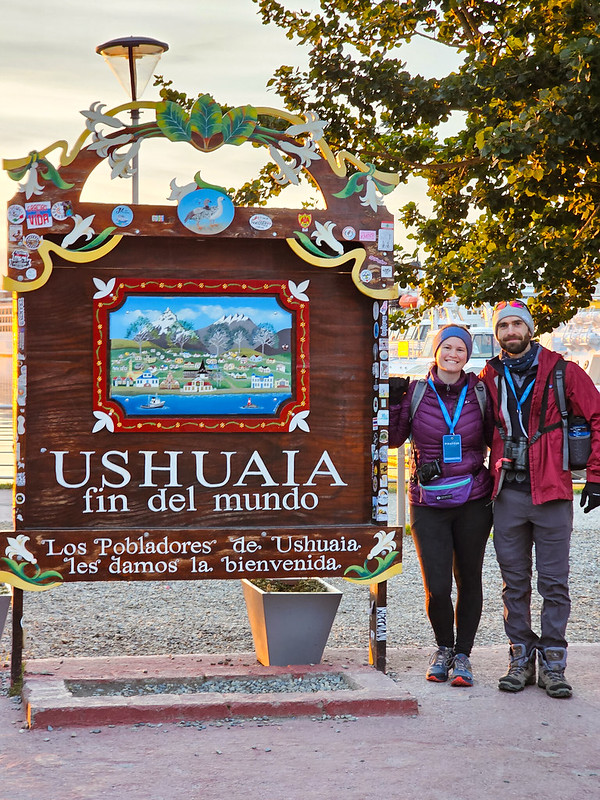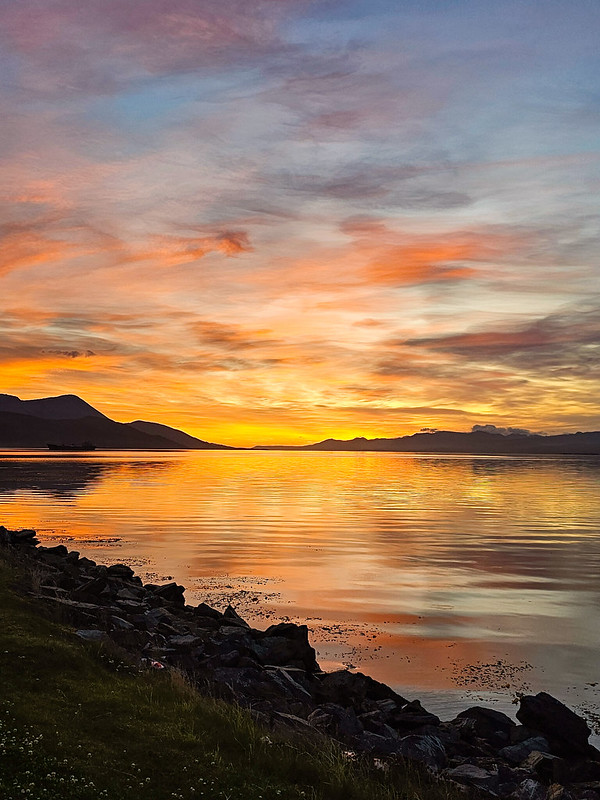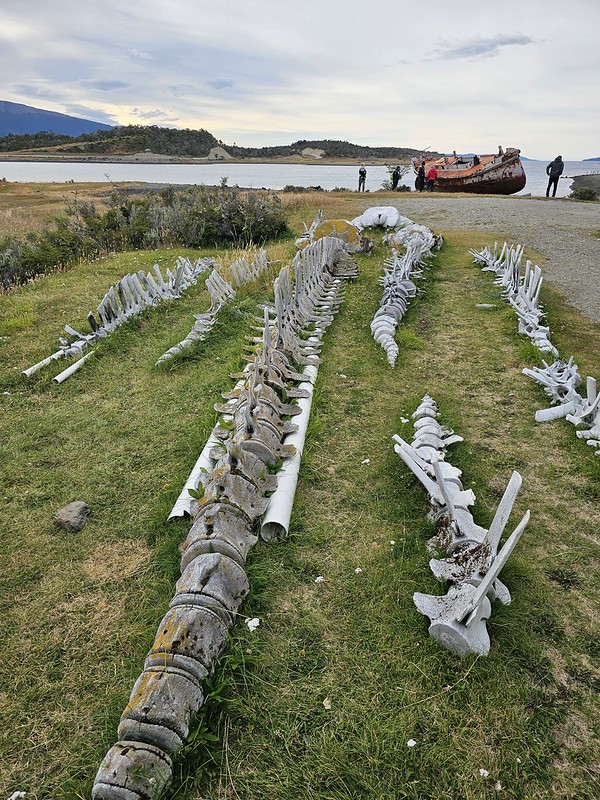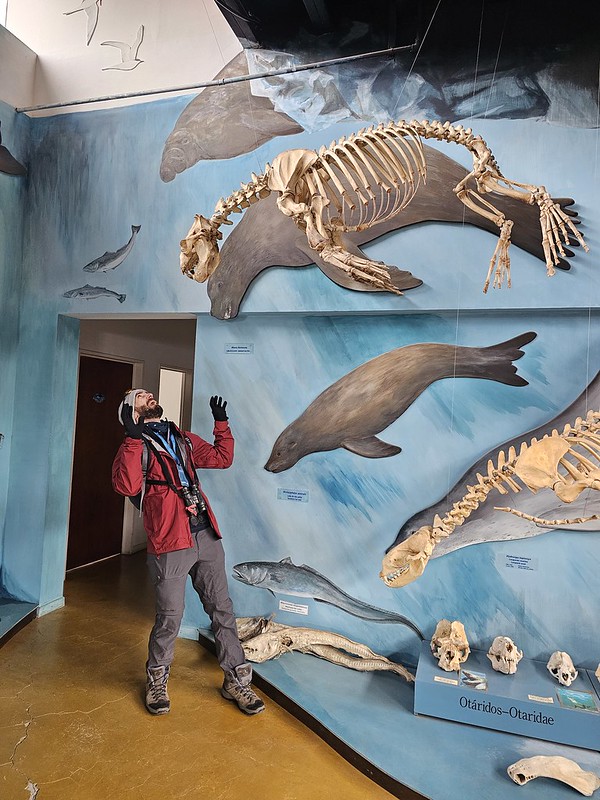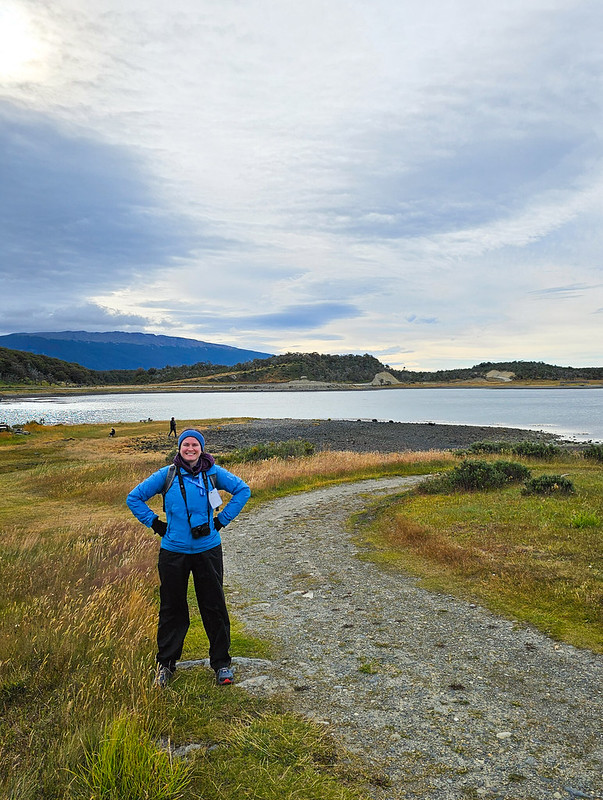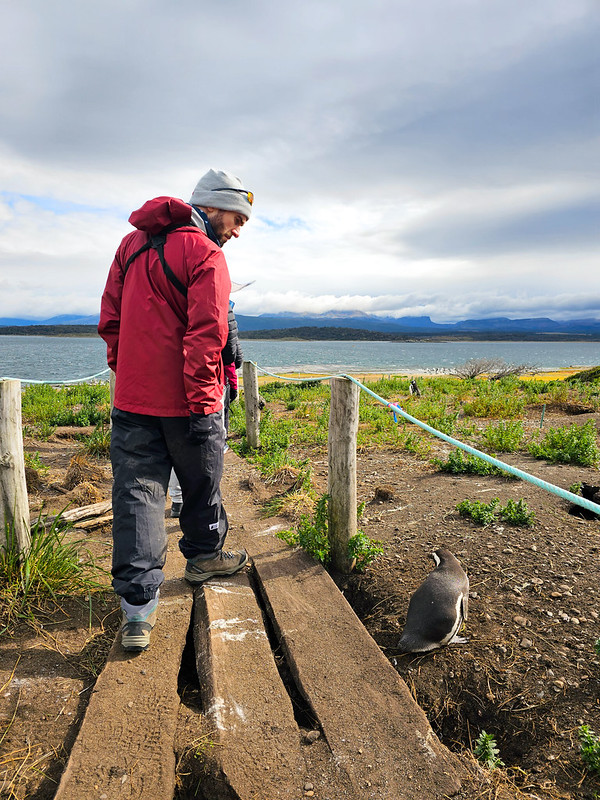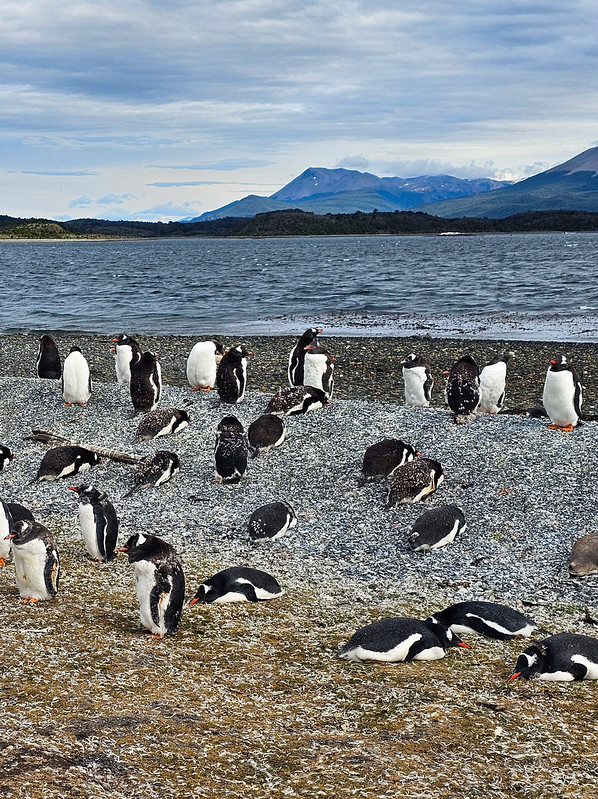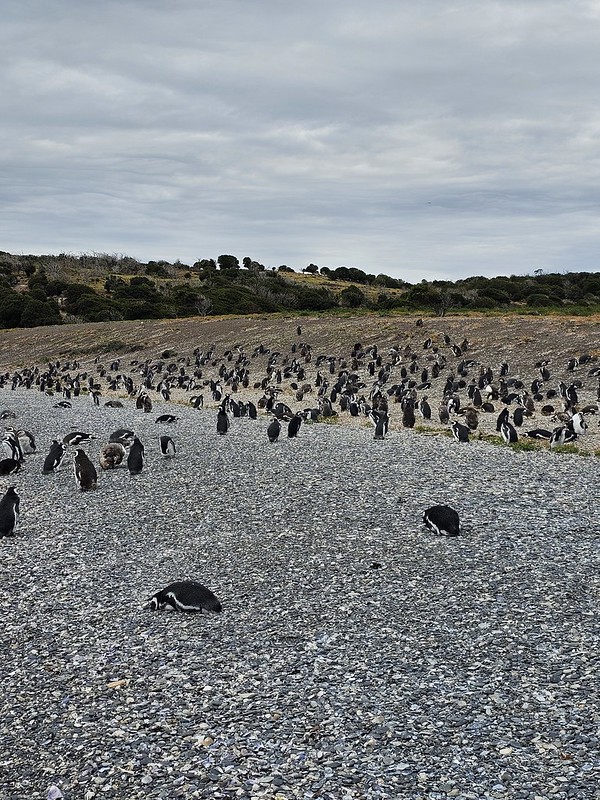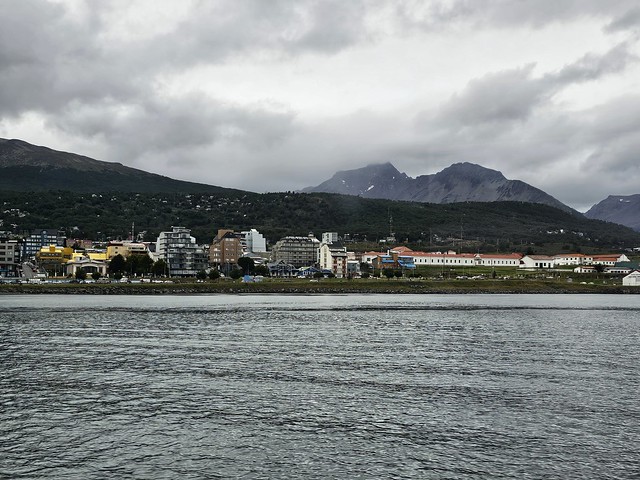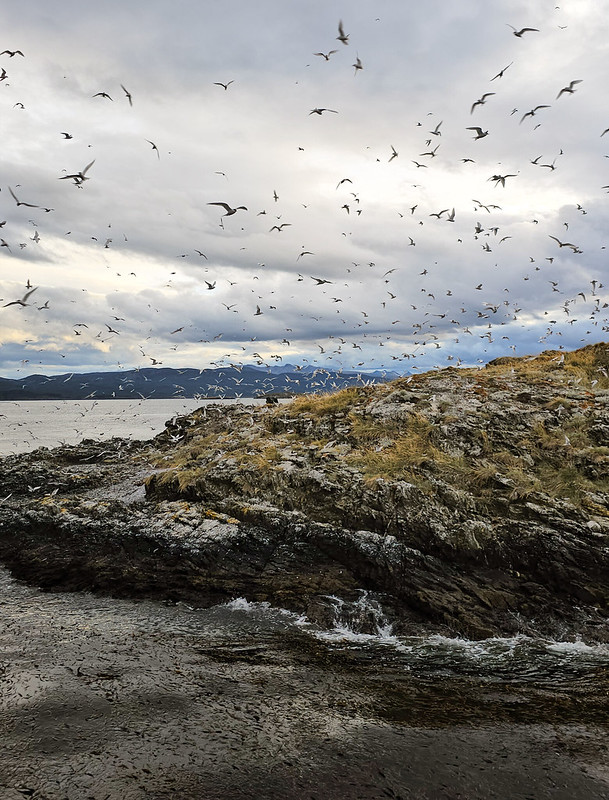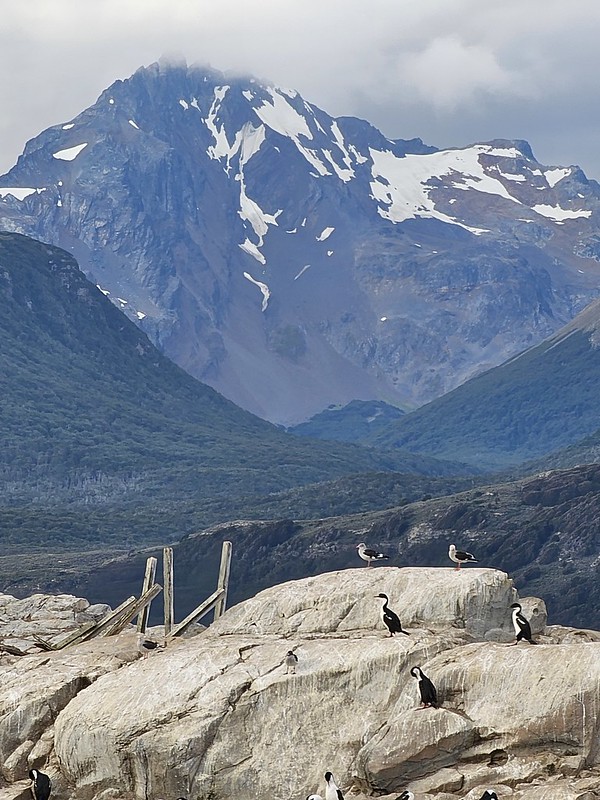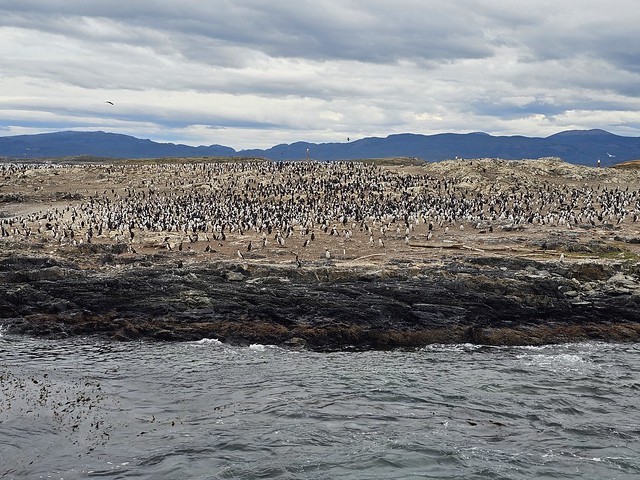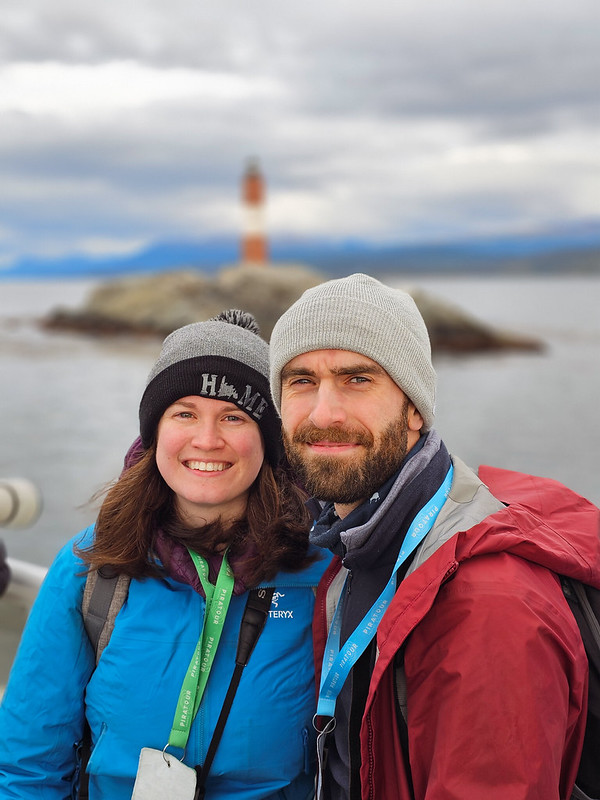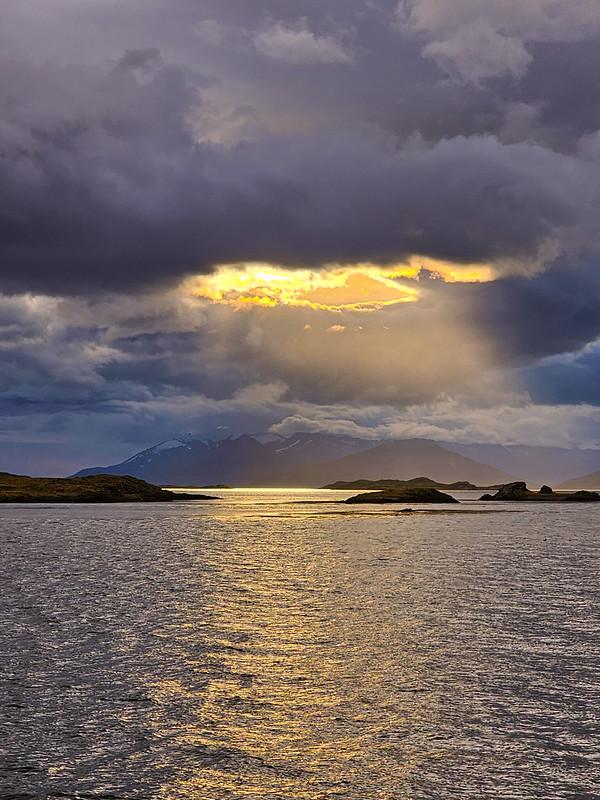We arrived in Ushuaia very late at night and took a taxi to our hostel. It was a harsh welcome because Buenos Aires was 30 degrees and Ushuaia was more like 10 degrees. It didn’t help that our room at the hostel could only be accessed from outside and no one had turned on the radiator before we arrived, so it was freezing on the first night.
We had a full day excursion booked, so it was an early rise the next morning with a 6am wake-up call. But it was worth it because we were taking a tour to Isla Martillo to walk with penguins! We were very lucky that it was a gorgeous day, which can be hard to come by in Ushuaia. Ushuaia is the most southern city in the world, and is popularly known as “the end of the world”. So even though it’s summer in February, the weather can still be quite harsh. It didn’t get much warmer than 12 degrees the whole time we were there and it can get extremely windy. One of the locals told me it does get up to 25 degrees sometimes, but there was fresh snow on the mountaintops while we were there.
We were up early enough to catch the sunrise as we walked down to the waterfront to find our tour. Ushuaia is in Patagonia, but it is more commonly associated with Tierra del Fuego, a large island at the bottom of South America. Ushuaia is located on the famous Beagle Channel, which separates Argentina from Chile. It’s also the starting point for most cruises to Antarctica, so there were a lot of ships of all sizes docked in the harbour. We enjoyed the sunrise over the channel and then jumped on a bus to drive 1.5 hours towards Haberton Ranch to catch a zodiac to Isla Martillo.
One of the most popular activities in Ushuaia (aside from Antarctica), is to cruise the Beagle Channel to see penguins. There are a ton of pleasure cruises that leave from Ushuaia and motor down to Isla Martillo to observe the penguins that nest on the island. There is just one tour (Piratour) that allows you to actually go on the island. It was definitely a costly tour, but I don’t regret paying extra for it because it was fantastic!
There are only 20 people allowed on the island at a time and you have to be accompanied by a certified guide. Our group was split in two and we spent the first hour visiting the Museo Acatushun at Haberton Ranch, while the other group toured the island. The Museum has the largest collection of marine birds and mammal bones in the world. It’s an eccentric place – the owner was an enthusiastic collector of whale bones, but they can be pretty stinky, so she basically bought the ranch as a place to store all her bones and then turned it into a museum. She’s since passed away, but the museum is now staffed by energetic biology students, who run daily tours and then clean bones in their spare time.
Tierra del Fuego is a great place for a bone museum though because it seems to be the place where whales go to die. We saw one dead whale washed up on the beach on our way to the ranch, and another one from the boat on our way to the island. But it’s a cool place and the students that give the tours are very knowledgeable. We had a fun time and it’s a super scenic location. It was quite chilly and windy and it really contributed to the “end of the world” vibes. It kind of hit me at that moment, the gravity of where we were and how lucky we were to be there. I’ve wanted to visit Patagonia for at least 6 years now, and it felt unreal to actually be doing it.
As cool as the Museum was, the penguins were infinitely cooler. We took a zodiac for about 15 minutes to Isla Martillo, where we disembarked with our guide to walk the island. There are two types of penguins that nest on the island – Magellanic Penguins and Gentoo Penguins. Occasionally you can see King Penguins on the island as well, but they don’t nest there. The Magellanic Penguins don’t really like the cold, so from what I remember, Isla Martillo is one of the most southerly colonies of Magellanic Penguins and they only migrate there in the summer to nest. The Gentoo Penguins are more traditionally found in Antarctica, but this colony can be found on the island year round.
I would hate to have to be one of the guides shepherding people around the island. It’s really important to stay together as a group and to always be with your guide so as to cause the least disruption to the penguins. But as you can imagine, people more or less lose their minds the second they see a penguin, so there was a lot of trying to keep the group gathered together. But it’s really such a cool experience. The boat drops you right on the beach and you visit the Gentoo colony nesting on the rocks first. There are Magellanic Penguins all over the island, so after that, you walk a little bit inland to see some of their burrows. They don’t seem bothered by people and it was cool to watch them waddling around. But my favourite was watching them swim. They’re so slow on land, but they absolutely whiz through the water!
We spent about an hour on the island before getting picked up by the zodiac and returning to Ushuaia via bus. We had a few hours of break time in the afternoon and we spent some time exploring the town. Ushuaia was not at all what I expected. It’s the “end of the world”, so I was expecting a very small town and was completely shocked to find dozens of mid-level high rises stretching across the oceanfront. The town is nestled on the foothills of the Patagonian mountains and because of the Antarctica cruises, it’s absolutely crawling with people. The actual town population is ~82,000, but I’m sure that balloons quite a bit with all the tourists.
Because of its location, seafood is easy to find and we quickly learned that the delicacy in Ushuaia was king crab. We decided to save that for our second day and instead, found a nice restaurant selling roast lamb, another Patagonian delicacy. We ordered lamb with roast potatoes and vegetables for two and received a ridiculously delicious and large portion of lamb! We ended up bringing half of it back to the hostel and eating it again for lunch the following day.
In the evening, we returned to the waterfront for our cruise of the Beagle Channel. Cruising the Beagle Channel is one of the biggest attractions, and like I said, a lot of people ride all the way down to Isla Martillo to view the penguins from the boat. We didn’t need to cruise that far, but I didn’t want to miss the channel, so the evening cruise was a great compromise!
One thing I loved about coming from Canada to Patagonia in February was the increased amount of daylight. Sunset was still 5pm in Vancouver at that time, so it was a real treat to enjoy a 9pm sunset every night in Ushuaia. Our cruise left at 6pm, but instead of having to motor all the way down to Isla Martillo, we got to circle around the Channel observing all the marine life! I think it may have been Seth’s favourite day of the entire trip and we had a blast on the boat because there were a ton of other very enthusiastic bird nerds on board that we quickly befriended.
It was pretty cold, so a lot of people stayed huddled inside the heated part of the boat, but we spent the entire cruise on the roof. Seth had his binoculars of course, but most of the other birders were sporting very large cameras. We hadn’t been able to find a quality English bird guide yet, so we took advantage of the other birders identification skills and had a great time spotting wildlife.
The highlight of the cruise for the birders was spotting a Blackish Cinclodes, which is a pretty unremarkable little black bird, but apparently it’s super rare and was flying around the boat for a solid hour, so all the nerds were in a tizzy over it! I’m not sure what my favourite bird was, I’m still pretty partial to oystercatchers, so maybe them, but it was cool to see an albatross.
The highlight of the tour for non-birders is probably Faro les Eclaireurs, which is a small lighthouse structure on a barren rock. It’s probably known as the “lighthouse at the end of the world” if I had to guess. It did have a bunch of sea lions hanging out on it at least! What I found more intriguing was the fact that the Channel is basically the border between Chile and Argentina, so while you’re cruising around, you have Argentina to the east and Chile to the west!
The tour finished around 9pm and we made a quick exit back to the hostel to try and catch up on some rest before another big day exploring Tierra del Fuego National Park. Check back next week for that!
